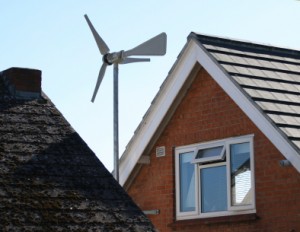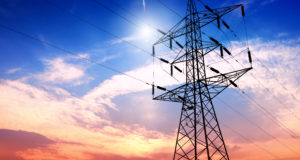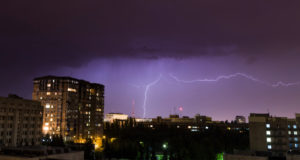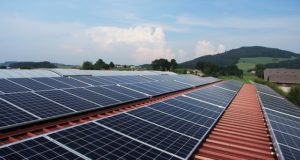 The basis for much of modern wind power technology dates back to ancient times. Wind power was first used as an aid to process grain and pump water into Persia between 500 and 900 AD. These early windmills were based on a vertical shaft design and featured large mats made of reed for the sails. Even though these early attempts were crude by today’s standards, they proved that the power of the wind could be harvested to help with manual tasks.
The basis for much of modern wind power technology dates back to ancient times. Wind power was first used as an aid to process grain and pump water into Persia between 500 and 900 AD. These early windmills were based on a vertical shaft design and featured large mats made of reed for the sails. Even though these early attempts were crude by today’s standards, they proved that the power of the wind could be harvested to help with manual tasks.
This early design has matured through the years and changed to the more familiar horizontal-axis design seen today as this technology made its way to Europe around 1300 AD. The reasons for this change to the horizontal design have been lost to history, but it is thought that these early European windmills borrowed some of their construction from the waterwheels that were popular there for centuries. A horizontal-axis wind turbine also allows you to take advantage of more of the available wind since it doesn’t require the shielding that a vertical-axis design demands.
Adopting these early models for the generation of electricity happened first in Cleveland, Ohio in 1888. This early wind-powered turbine could only generate a very small amount of current for its large size, but proved that this technology could be used as an alternative energy source. This initial design has been refined over the years to result in the modern version of these wind-power systems.
Residential wind power was slow to be adopted by homeowners because of the early model’s large size and low power output. The challenge for these early designs was that they were based on their very successful commercial brethren and didn’t really perform well in residential settings. The reasons for this were that even though these residential versions were smaller than the commercial units they borrowed their design from, they were still too large for many homes. They also required a very strong and steady wind to operate and had to be raised up in the air on a very tall and expensive tower to find this type of breeze. This tower would also create complaints from neighbors and led to many areas enacting rules about where these types of systems could be installed.
All of these problems have been addressed in modern versions of these wind power systems. The design of most modern wind turbines has changed to make them smaller and lighter, which allows them to harvest the slower and bursting wind typically found in most neighborhoods. Because of their smaller size, they don’t require the larger towers the older versions needed and most of these new wind turbines can even be mounted directly on the roof of your home. This helps to lower the installation costs and makes it easier to service the turbine if needed.
In addition to their smaller size, these newer wind-power turbines are also more efficient. Changes to their designs allow them to generate substantially more power from an average breeze than older models. This increased efficiency is due mainly to two design changes in these newer turbines.
First, the blades are designed to harvest more of the passing breeze. Where older blade designs only reacted to the pressure of the wind known as “drag”, these newer models can also take advantage of “lift”. This allows these modern wind-power turbines to spin in slower winds, which means they are productive for more of an average day. These new blade designs also enable these turbines to spin faster, and more revolutions equates to more power being generated.
The next big change in these newer wind-power turbines has to do with the generators used in their design. These generators are connected to the shaft that is spun by the blades and is the part of a wind-power system that creates the actual power. Modern generators present less of an obstacle to rotation because of improved materials and bearing designs. This allows the blades to react to lighter winds and actually spin the generator at these lower speeds. These newer generators are also more powerful and can produce a higher output of power from a single rotation. These two factors combine to allow these wind turbines to provide far more power than older versions in a given day.
Modern versions of these wind power systems enjoy another advantage over other alternative energy solutions (like solar power) in that they can operate day or night as long as the breeze is blowing. Even the most efficient solar power systems available can only operate for a portion of a given day and are actually dormant for more of the day than they are active. Most wind power systems can’t produce nearly the amount of power as a typical solar power solution, but they are active more often and can help to close the gap between these systems over time. In fact, many homeowners install a wind power system on their home along with a solar power solution to allow this complimentary technology to augment the electricity the solar power system provides.
Installing one of these wind power systems is simply a matter of mounting a wind turbine on your home and connecting it to your electrical system. Some of these units require an inverter to transform the DC current they produce into AC current that can be used by your home. Other models have a small inverter included in their design and can actually deliver AC power right to your home. This makes the installation very easy and allows a homeowner to do most of the work themselves. You will still need to have a professional make the final electrical connections to your home to be sure everything passes inspection.
The way these systems save you money each month is by generating free electricity from the wind and using this power in your home. This allows you to buy less of the expensive power your local utility is now selling you and will have a substantial impact on your energy costs each month. In some cases a combination solar and wind-power system can even generate more electricity than your home is using and will produce an income for you each month when your power company pays you for this excess power.
Other articles in this issue:
If you liked this article you may be interested in this product from our sponsor.

 Off The Grid News Better Ideas For Off The Grid Living
Off The Grid News Better Ideas For Off The Grid Living



